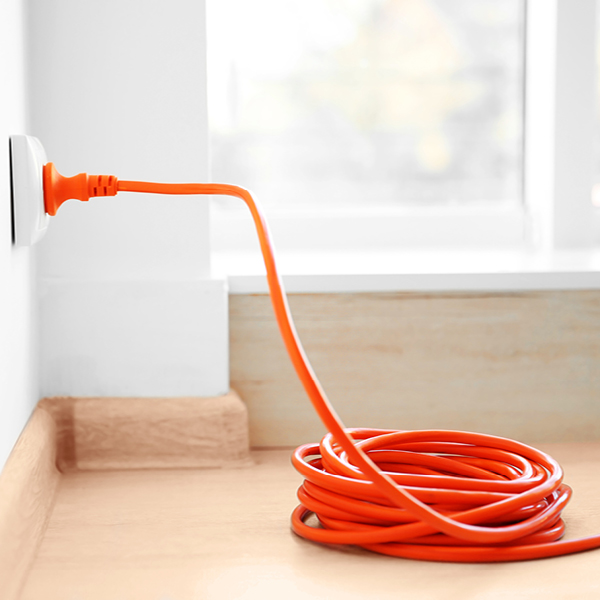How to Choose Extension Cords for Power Tools
We’ve all been there – in need of a trusty extension cord to power our gadgets, tools, or appliances. However, before you grab the first one you see, there’s an important factor to consider: the length of the extension cord. This is especially critical when using extension cords for power tools and heavy equipment.
Believe it or not, the length of the cord can significantly impact its performance, and here’s why.
The Voltage-Length Relationship:
In the world of electricity, copper is a champion conductor, but even champions have their limits. The longer the extension cord, the more resistance it introduces to the electrical flow. This increased resistance results in heat, which not only damages the cord itself but also poses a threat to the devices plugged into it.
If you’re using high-amperage equipment like power tools, a voltage drop in the cord can prevent the tool from running at full speed, causing overheating and potential damage.
Understanding the Chart:
To navigate the extension cord landscape, consider the chart below to determine the appropriate cord length for your needs:
If both the electrical device and the extension cord are rated in amps, choose a cord that exceeds the amperage requirements of the device. In case you plan to connect multiple devices simultaneously, add up the current requirements for each. For devices listed in watts, use the formula: Amps = Watts/110.
Practical Advice:
To ensure a smooth and safe extension cord experience, follow these practical tips:
- Select the Right Cord Length. Choose the shortest extension cord that comfortably meets your needs. Longer cords result in more resistance and potential voltage drops.
- Check Amperage Ratings. Match the amperage ratings of the extension cord and your devices. Opt for a cord that exceeds the device’s amperage requirements.
- Convert Watts to Amps if Necessary. If your device’s power requirement is in watts, use the formula Amps = Watts/110 to determine the amperage.
- Reach Out for Guidance. If in doubt, seek advice from electrical experts. At Massive, our knowledgeable team is ready to assist with any questions or concerns you may have.
Choosing the right extension cord goes beyond grabbing the closest one on the shelf. Understanding the impact of length on voltage and following the guidelines ensures a safe and efficient power supply for your devices. So, the next time you’re in need of an extension cord, make an informed choice and enjoy a hassle-free electrical experience.
And if you need to rent one, browse our Cayman Islands equipment inventory.
Happy extending!

